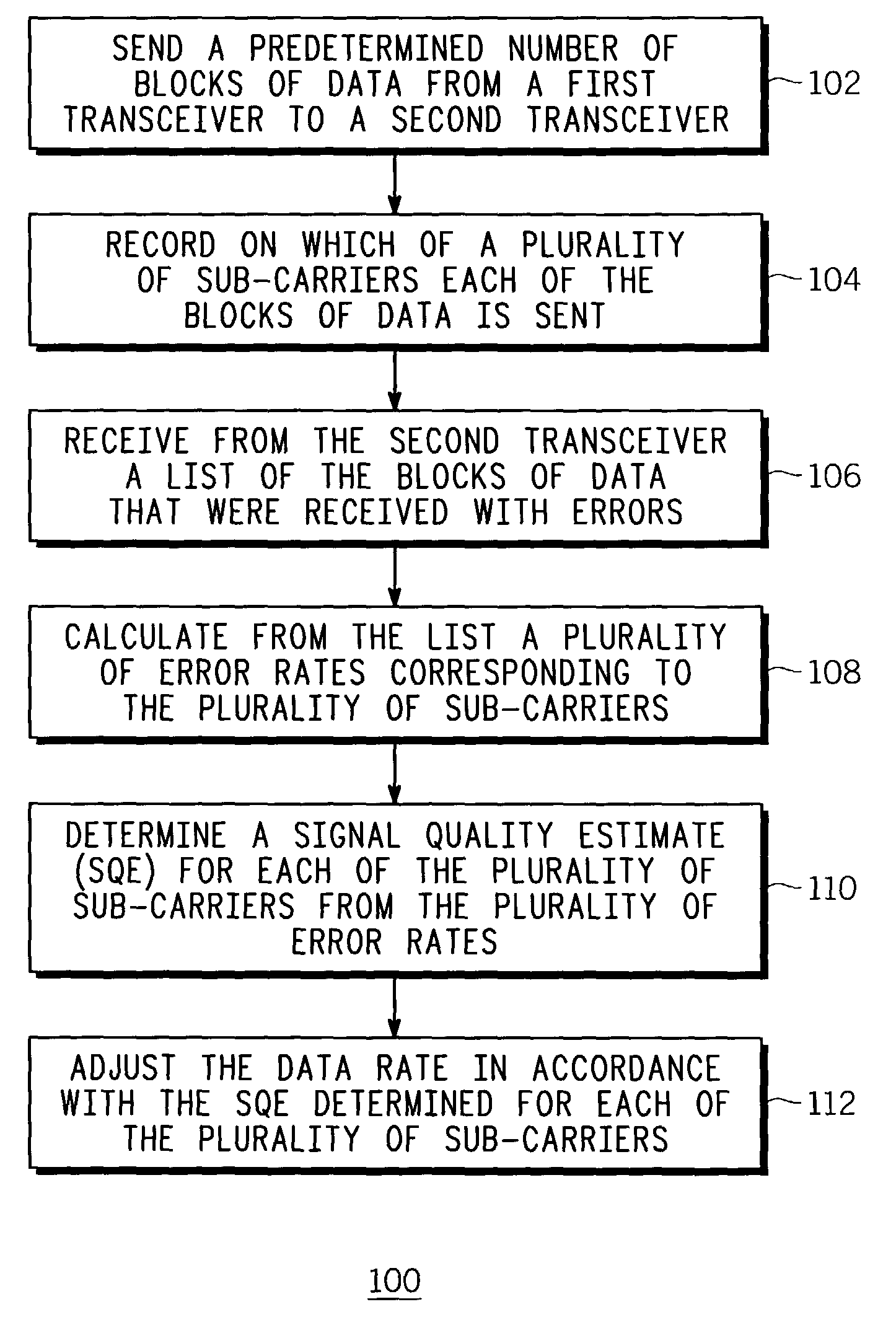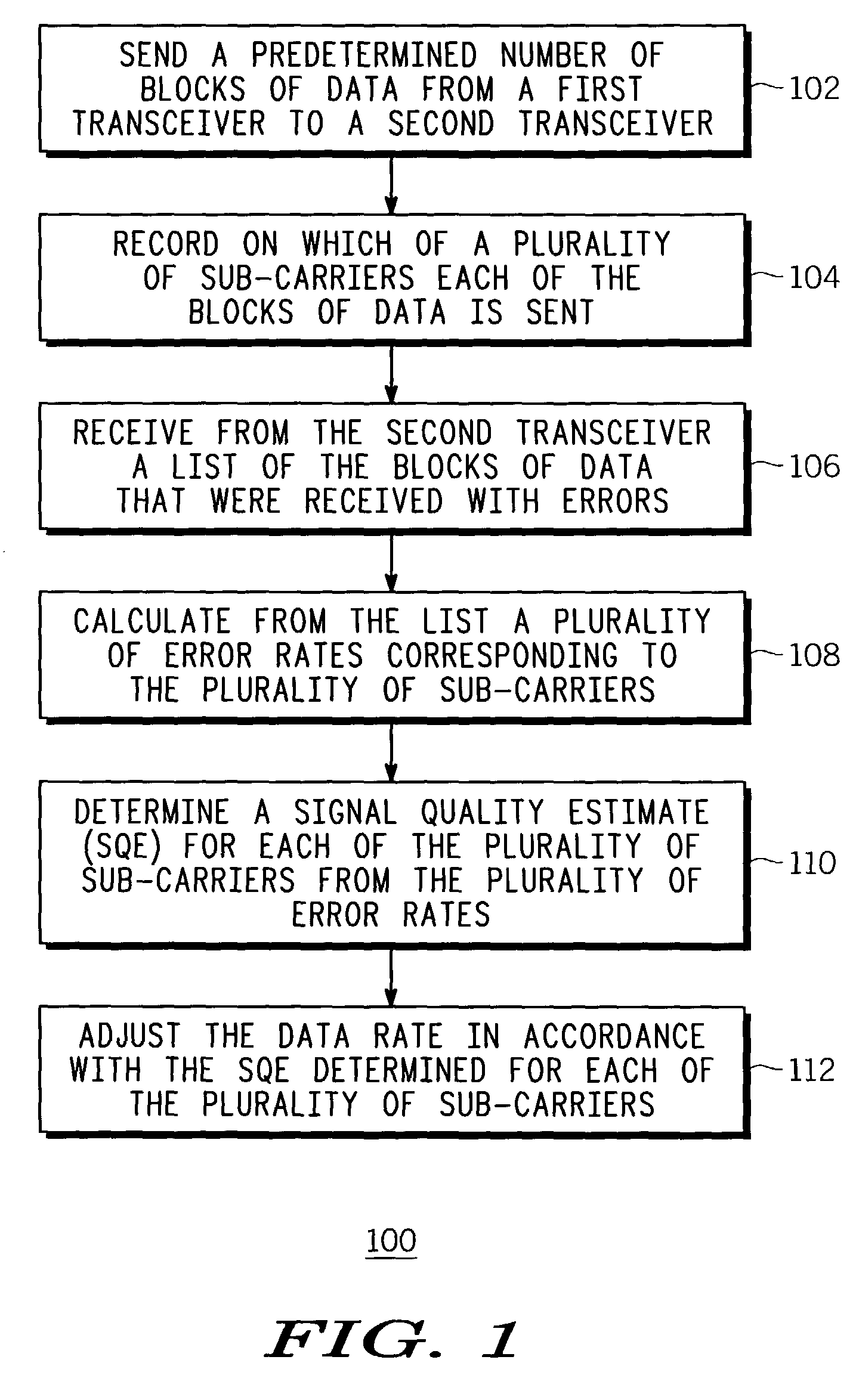Method and apparatus for maximizing a data rate of a wireless data communication system
- Summary
- Abstract
- Description
- Claims
- Application Information
AI Technical Summary
Benefits of technology
Problems solved by technology
Method used
Image
Examples
first embodiment
[0026]The first embodiment advantageously requires no explicit feedback from the second transceiver to the first transceiver about the SQE. The first transceiver estimates the SQE based on the layer-two data transmission reported errors. The first transceiver transmits a Medium Access Layer Normal Transmission Unit (MAC NTU) consisting of several blocks of transmitted data, using an initial modulation format. The first transceiver records on which sub-carrier each block is transmitted.
[0027]The second transceiver receives the data and sends back to the first transceiver a list of blocks that are received with errors in the form of a Selective Automatic Retransmission reQuest (S-ARQ). (In the prior-art system, the transmitting entity only uses the S-ARQ information to retransmit the blocks received with errors.) In the first embodiment, the first transceiver uses the S-ARQ feedback and the first transceiver's records concerning on which sub-carrier each block was transmitted, to deri...
second embodiment
[0033]The second embodiment uses an average full signal SQE measurement reported back to the first transceiver to estimate the individual sub-carrier SQEs. This method advantageously reduces the bandwidth required for reporting SQE measurements back to the first transceiver, compared to the prior-art method. Instead of reporting an SQE measurement for each sub-carrier, the second transceiver reports only the average SQE, and the first transceiver uses the block error rates that are readily available to estimate the SQE on each sub-carrier. This may be done in several ways. A preferred method is as follows:
[0034]Let SQEavg be the full bandwidth SQE. SQEi, which represents the SQE for sub-carrier i is derived as follows:
[0035]The average SQE selects a point in a pre-stored SQE-to-block-error-rate curve saved in the first transceiver. The sub-carriers are ordered in ascending block error rate:
[0036]C1-C2-C3-C4, where the corresponding error rates are E1, E2, E3, E4.
[0037]Starting from ...
PUM
 Login to View More
Login to View More Abstract
Description
Claims
Application Information
 Login to View More
Login to View More - R&D
- Intellectual Property
- Life Sciences
- Materials
- Tech Scout
- Unparalleled Data Quality
- Higher Quality Content
- 60% Fewer Hallucinations
Browse by: Latest US Patents, China's latest patents, Technical Efficacy Thesaurus, Application Domain, Technology Topic, Popular Technical Reports.
© 2025 PatSnap. All rights reserved.Legal|Privacy policy|Modern Slavery Act Transparency Statement|Sitemap|About US| Contact US: help@patsnap.com



